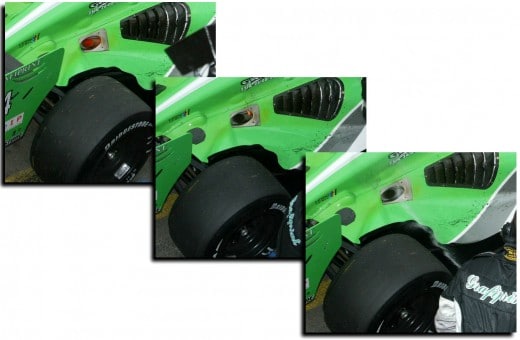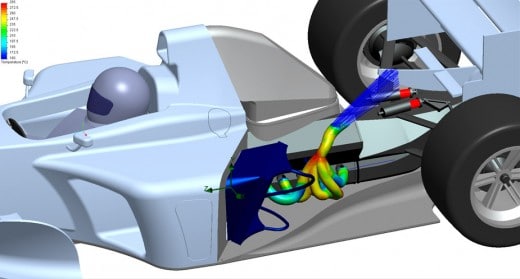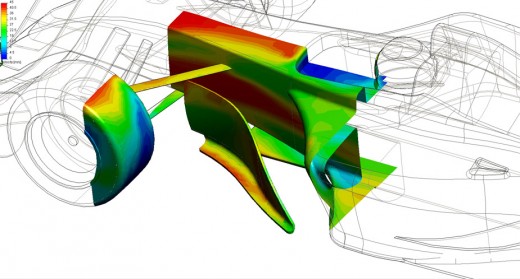Using CAD-embedded CFD upfront and throughout the design process is the only way to go when it comes to compressing design schedules. We call this approach Concurrent CFD, as the CFD analysis can be done concurrently with design changes, taking upfront CFD to the next level. The product’s performance can be checked at each design iteration, leading to a more fluent CFD process that gives increased confidence as the design is elaborated.
That’s not the only way to use CFD though. It’s a fantastic diagnostic tool for understanding problems and fixing them post-design. Voxdale’s starting point was the 2007 Champcar chassis, which had an issue where the engines exhaust protruded through the car body. During a pit stop, the exhaust, which was red hot, caused a small fire. Based on the image below I put the temperature at around 700degC where it passes through the body.

The same principal applies to pretty much everything else. In the case of the Champcar that Voxdale were studying, analyzing air flow over the exhaust starts with a detailed analysis of the side pods upstream as the exhaust cooled by internal side pod flow. Flow over the overall car shown in the previous post is used to provide the boundary conditions for the zoom in region.
The root cause of the problem was found to be too small a gap between the exhaust and the car body, so during the race too little air was flowing over the exhaust, causing it to get too hot. The solution was to retrofit a small internal baffle or vane to direct more of the cooling air to the hot part of the exhaust. This dropped the temperature significantly. Indeed, this was so successful that Voxdale found that the flow through the side pods could be reduced, reducing the overall drag.
Reducing drag is the Holy Grail in high-speed motorsport, so in fixing the exhaust overheating problem Voxdale were able to deliver improved performance. Without CFD some other solution would most likely have been found, such as adding high-temperature insulation between the exhaust and the body. Even if the cause was guessed correctly, the body would have been changed to provide a larger gap, but the opportunity to reduce the size of the side pods would have been missed!
So, with Concurrent CFD as part of your design process EXPECT INSIGHT!! … and better designs. If like Voxdale you use Pro/ENGINEER you can get a free trial download of FloEFD.Pro.
Dr. J, Hampton Court








